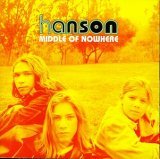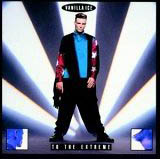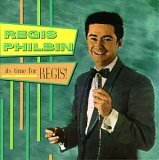Warner is trying out a new business model for selling music over the web (BBC, CNET). The new “e-label” will sell music exclusively online (no CDs) in three-song clusters, abandoning the conventional album format and allowing emerging artists to prove themselves gradually, without the pressure of a sink-or-swim album deal. What would Sgt. Pepper say?
Crusty aficionados have for some time been lamenting the death of the album in the age of .mp3s, file-sharing and iTunes, where kids are growing up with vast, shifting libraries of individual tracks instead of meticulously ordered, packaged collections. While it’s true that a generation of shufflers may not have much respect for the integrity of albums, it’s important to remember that most albums don’t have all that much integrity to begin with. When the recording industry moved from singles to the longer format of albums, it’s not as though there was a corresponding growth in the amount of quality material. As a result, most albums consist of a couple of hit singles padded with filler. No one should mourn the disappearance of this sort of album.
Albums the world would be better off without:

![]()

![]()

Making a good album is difficult, not unlike putting together a good collection of short fiction, or, in the case of concept albums, an entire novel. I like Warner’s idea because it allows musicians to mature gradually, building a fan base and working their way up to the longer form. In turn, one-hit wonders can fizzle out naturally without burdening the world with rotting, opus-sized legacies.
I’m not too worried about the death of the album, at least not for some time. Artists that are capable of producing worthwhile albums will continue to release long format work, and kids will continue to pick and choose songs, and shuffle away carefully chosen track orders. But at the same time, they will make eclectic playlists, some of them uncovering hidden connections that can only be made manifest by porous, digital libraries. It seems to me that it will be a healthy give and take. Just as I’m confident that the novel will survive in an age of scattershot online reading, so will the album in the age of the iPod.
(One way to foil the shufflers would be to release albums in one big track. Remember “Thick As A Brick”?)
Category Archives: media_consumption
the book has been dead for a long time
“The newspaper kills the book, as the book has killed architecture, and as artillery has killed courage and muscular strength. We are not aware of what pleasures newspapers deprive us. They rob everything of its virginity; owing to them we can have nothing of our own, and cannot possess a book all to ourselves; they rob you of surprise at the theatre, and tell you all the catastrophes beforehand; they take away from you the pleasure of tattling, chattering, gossiping and slandering, of composing a piece of news or hawking a true one for a week through all the drawing-rooms of society. They intone their ready-made judgments to us, whether we want them or not, and prepossess us against things that we should like; it is owing to them that the dealers in phosphorus boxes, if only they have a little memory, chatter about literature as nonsensically as country Academicians; it is also owing to them that all day long, instead of artless ideas or individual stupidity, we hear half-digested scraps of newspaper which resemble omelettes raw on one side and burnt on the other, and that we are pitilessly surfeited with news two or three hours old and already known to infants at the breast; brandy drinkers and file and rasp swallowers, who have ceased to find any flavour in the most generous wines, and cannot apprehend their flowery and fragrant bouquet.”
(from Theophile Gautier’s preface to Mademoiselle de Maupin, May 1834)
transliteracies: research in the technological, social, & cultural practices of online reading
Bob’s post last week about changing patterns of media consumption kicked off an interesting discussion, one that leads up perfectly to the “Transliteracies” conference we are attending this weekend at UC Santa Barbara.
Alan Liu, director of the Transliteracies project, posted this response, which very elegantly lays out some of the important questions. He’s allowed me to re-post it here..
BEGIN: The relationship between “browsing” and the “sheer volume” of information is complicated. To start with, I think there is much to be gained in complicating our usually uniform concepts of “browsing” (all shallow, fragmented, attention-deficient) and “volume” (“sheer,” as in a towering, monolithic cliff).
We get a sense of the hidden complexity I indicate if we think historically. Below is a passage from Roger Chartier — the leading scholar in the “history of the book” field — that should give us pause about making any quick associations between browsing and today’s information glut:
“Does this reaction toward the end of the [18th] century indicate a consciousness that reading styles had changed, that the elites in western Europe had passed from intensive and reverent reading to a more extensive, nonchalant reading style, and that such a change called for correction? . . . In the older style: (1) Readers had the choice of only a few books, which perpetuated texts of great longevity. (2) Reading was not separated from other cultural activities such as listening to books read aloud time and again in the bosom of the family, the memorization of such texts . . . , or the recitation of texts read aloud and learned by heart. (3) The relation of reader to book was marked by a weighty respect and charged with a strong sense of the sacred character of printed matter. (4) The intense reading and rereading of the same texts shaped minds that were habituated to a particular set of references and inhabited by the same quotations. It was not until the second half of the eighteen century in Germany and the beginning of the nineteenth century in New England that this style of reading yielded to another style, based on the proliferation of accessible books, on the individualization of the act of reading, on its separation from other cultural activities, and on the descralization of the book. Book reading habits became freer, enabling the reader to pass from one text to another and to have a less attentive attitude toward the printed word, which was less concentrated in a few privileged books.” — Roger Chartier, “Urban Reading Practices, 1660-1770,” in his The Cultural Uses of Print in Early Modern France, trans. Lydia G. Cochrane (Princeton: Princeton Univ. Press, 1987), pp. 222-24
It’s pretty certain that browsing in the face of sheer volume were deep habits of literacy (specifically, of high print literacy). By contrast, one might ask: who read so intensely and deeply — to instance the extreme — that they only really read one book? There were probably just three classes of such people: the very poor (I remembe r, but can’t find at present, an essay by Chartier about people in the past who owned just one book, which was found on their body after a coach accident in Paris), the extremely pious (who read the Bible), or the “genius” author. (Think of Blake, for example: no matter how many books he read, he really only had one or two books on his mental bookshelf: the Bible and Milton.) By contrast, everyone else browsed.
Mass literacy in the twentieth century, perhaps, may be a phenomenon of browsing. Think of Reader’s Digest. After my family immigrated to the U.S. in my childhood, we were a kind of microcosm of assimilation (into English literacy) in this regard. There were two major investments in books in my household: the Reader’s Digest series of condensed books (a kind of packaged browsing) and The World Book encyclopedia (a veritable lesson in reading as browsing-cum-volume). I drank deeply from both founts as a child, since these were the main books in the house. I was intense in my browsing.
So now let’s snap back to the present and the act of browsing cyber- or multi-media volumes of information. I’ve started a project (combining humanists, social scientists, and computer scientists) called Transliteracies to look into “online reading.” It’s my hypothesis that there are hidden complexities and intelligences in low-attention modes of browsing/surfing that we don’t yet know how to chart. Google, after all, is making a fortune for algorithms enacting this hypothesis. Or to cite a historical googler: Dr. Johnson, sage of the Age of Reason, was famous for “devouring” books just by browsing them instead of reading “cover to cover.” (To allude to the titles of the two serial magazines he was involved with, he would have called browsing Rambling or Idling [The Rambler, The Idler.)
Just as “browsing” is complex, so I think that there are hidden complexities in the notion of “sheer volume.” Some of the digital artists I know — e.g., George Legrady, Pockets Full of Memories — are “database artists” whose work asks the question, in essence: what happens to the notion of art when we gaze not at one work in rapt wonder but several thousand works — when, in other words, the “work” is “volume”? What if quantity, in other words, was a matter of quality? Aren’t there different kinds of “volume,” some more intelligent, beautiful, kinder, humane (not to mention efficient and flexible, the usual postindustrial desiderata) than others?
I’d better stop, since this comment is too long. As Blake said about volume: “Enough! or too much.”
Something is happening here but you don’t know what it is, do you, Mr. Jones?– me either for that matter.
 Came across this on a web-site i’d never heard of while searching for audio samples of a sound artist i’d never heard of (Todd Dockstader) that was referenced in a copy of magazine called The Wire that i purchased for the first time.
Came across this on a web-site i’d never heard of while searching for audio samples of a sound artist i’d never heard of (Todd Dockstader) that was referenced in a copy of magazine called The Wire that i purchased for the first time.
Stacked in almost innumerable dusty piles around my room are the incoming CDs of many a publicist’s hardwork & toil. And for reasons that have more to do with esoteric alignments of the stars than any particular dislike, they often remain untouched & unheard for far, far too long. This very column is somewhat of an attempt to remedy this situation while also commenting on the sheer volume of music, especially electronic music, that continues to be released. It’s a deluge of expression via our machines, which has resulted in an inverse response of criticism, a lack of perspective, an inability to perfect the zoom-out on the overall picture of what is being produced by this wired and wireless culture. . .
— tobias c. van veen in cut-up
reminded me for the 323rd time in the past several months that something profound is happening relative to the “sheer volume” of media being produced and new (online) distribution patterns. would love to start to understand the ramifications. here’s one i see in my own behavior — and you can’t imagine how painful it is to own up to this:
in 2001, 2 and 3 i made a scrapbook of things i collected on the web. i included in the scrapbook a record of all the books i read cover-to-cover. each year the number was at least 24. suddenly in 2004 the number went to ONE, and that was a graphic novel that i read in a few hours.
i’m still reading quite a bit but most of it is online and in much smaller chunks than books or even long articles. but also, with the advent of big notebook computers with dvd drives and large screens, some of my reading time has been supplanted by watching time as i’ve begun to absorb TV series (sopranos, 24, Six Feet Under) — viewing all the segments in as few sittings as possible, much like the experience of a page-turner novel.
i’m also browsing quite a bit more. when i was a teenager i went to the record store (yes, i’m that old) and would spend quite a long time choosing one or maybe two to buy. then i would bring those home and listen to them over and over and over. now i find i hardly ever have to come out of browsing mode. between othermusic.com, earplug, etc. etc. a scary amount of my conscious music listening can be subsumed by surfing for new sounds.
i’d like to find a way to get people to talk about their media consumption so that we can begin to understand what actually is happening, not just quantitatively, but qualitatively.
any suggestions?
(image by Gregory Vershbow)
